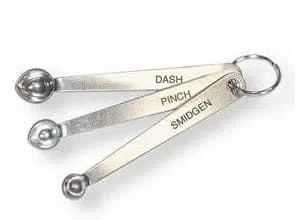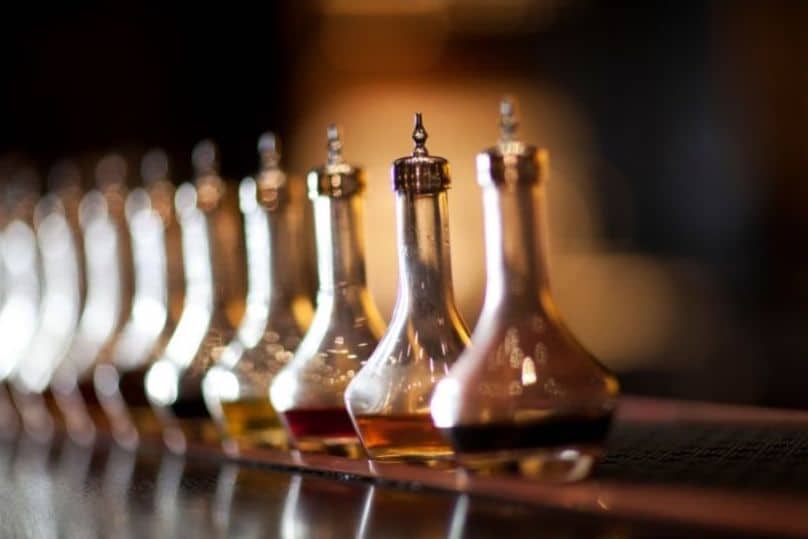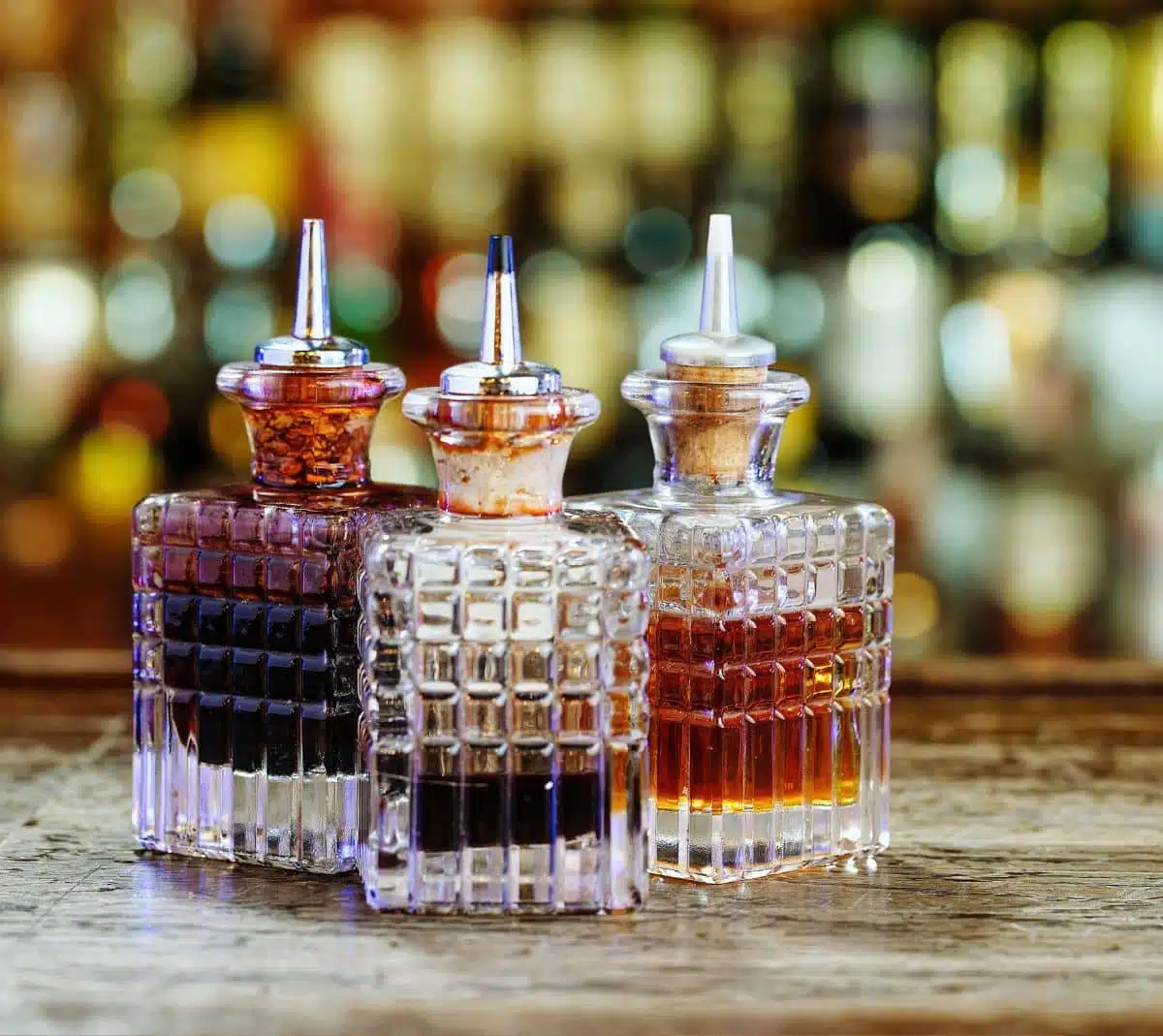You're trying a new cocktail recipe, and it asks for a dash of bitters? So what exactly does it mean? A drop, ten drops, 5ml? The short and precise answer is that one dash of bitters equals 1/32 oz or 0.92 ml.
There's also a longer and more practical answer to this question which I'll discuss in more detail in this article. As you might imagine, measuring 0.92ml is almost impossible. At least in a bar or home bar environment. But why are bitters served in dashes?
The measurement dash is used for potent or highly concentrated ingredients like bitters and Absinthe, added to a drink before shaking or stirring. The purpose of said ingredients is to enhance or complement the flavors of a cocktail and impart a deeper flavor profile to your drink.
Countless classic and contemporary cocktail recipes ask for a dash of bitters. -For the record, cocktail bitters do make a difference, e.g., a couple of dashes of Angostura bitters in a Whiskey Sour or an Old Fashioned. Still, when it comes to measuring a dash, confusion arises.
The term dash has been appearing in cocktail books for ages; It's as old as mixology itself. At the same time, it is one of the least precise measurements in bartending.
Still wondering "How much is a dash of bitters exactly?" Let's find out.
What is a Dash?
A dash is more or less the bartending equivalent of what a pinch is in cooking. A dash of bitters is seasoning your drink like salt is seasoning your Wagyu filet.
If you think about it like that, you can understand why the term is somewhat vague. Above all, it is a matter of taste if you use more or less seasoning or bitters. But since that's not a satisfying answer, let's take a closer look.

To explain the term dash further, you must know that bitters and other things usually dosed in dashes are stored in so-called dasher bottles.
Those bottles only release a wee bit of the liquid they contain at once.
But the mystery isn't solved with the dasher bottles alone. When you turn the bottle upside down and perform a hard and quick shake, the dasher bottle will release one dash. Here's a short video that shows what a dash looks like.
How much is a dash of bitters?
A dash is a minuscule quantity of liquid you cannot measure with standard measuring tools like jiggers or a bar spoon. But for all you number enthusiasts preferring an exact amount, here's our guide to measuring a dash.
| Dashes of Bitters | Milliliters (ml) | Fluid Ounces (oz) | Teaspoons (tsp) | Drops |
|---|---|---|---|---|
| 1 Dash | 0.92 ml | 1/32 oz | 1/8 tsp | 10 drops |
| 2 Dashes | 1.84 ml | 1/16 oz | 1/4 tsp | 20 drops |
| 3 Dashes | 2.76 ml | 3/32 oz | 3/8 tsp | 30 drops |
1 Dash of bitters
1 dash of bitters = 0.92ml or 1/32 oz (equals 1/8 of a teaspoon).
If you want to measure this more precisely than dashing the bitters in one thrust, you can use drops. - 1 dash of bitters equals 10 drops.
2 Dashes of bitters
If your recipe asks for two dashes of bitters? Well, the same math applies. 2 dashes of bitters equal 1.84ml or 1/16 of a fluid ounce (equals 1/4 of a teaspoon).
Measuring in drops, 2 dashes of bitters equal 20 drops.
3 Dashes of bitters
The logic from above applies to all measurements, also for 3 dashes. 3 Dashes of bitters equal 2.76ml or 3/32 oz (equals 3/8 of a teaspoon).
Measuring the amount in drops is the easiest way to get precise amounts. For 3 dashes, the number of drops you need is 30.
What are bitters?
Bitters are basically a flavorful alcoholic beverage that enhances cocktails with its intense bittersweet and aromatic taste. To make bitters, strong, neutral alcohol is infused with various aromatic ingredients like spices, bark, roots, cinnamon, citrus, fruit, and herbs. They bring depth and complexity to your favorite drinks, making them a key ingredient in many cocktail recipes.
There are many different types of bitters such as aromatic bitters (Angostura and Peychaud's bitters), orange bitters, coriander, cardamom bitters, and many more.
How to measure a dash
Even if you know the numbers now, you cannot measure them. So standardizing the dash is tough.
That, in turn, leads to slight differences in taste when different people make the same drink. But that is not necessarily a bad thing. Think of it as a part of your unique way of making drinks.
How you hold the bottle, the angle of the bottle and the exact amount of your dash is most likely different from others. Yet, as standard tools don't work for measuring a dash, there are some little helpers:
Dash measuring spoon

For cooking, there are those tiny measuring spoons that should help to measure a dash. But measuring with them is hard as the liquid from the bitter bottles is not so easy to control. At least if all of the bitters should end up on that tiny spoon.
A way to measure a dash more consistently - Japanese dasher bottles
If you still feel unsure and don't have enough experience, you might search for a better way to measure your dash anyway. And I can understand that.
The plastic dasher tops of the bitter bottles you can buy are usually more in the direction of not-so-precise. Luckily, there is a solution to that.
Some of the world's top bars also noticed the dash gate and started acting on it. Many of them use only special dasher bottles, mostly Japanese ones.

These elegant little bottles are a lot more precise. Death & Co bar in New York experimented with them and found that one dash of a dasher top bottle equals three from a Japanese dasher bottle.
My advice is if you're feeling unsure, get one of these dasher bottles. The dashes will be more precise and consistent. And consistency is an advantage when you're new to mixology and want to learn how everything works together.
What happens if my dash isn't their dash?
Even if you are a perfectionist, don't worry too much about the difference taste-wise. Despite everything, a dash is a small amount. And, as long as you only use a small amount, you won't ruin your cocktail.
Making cocktails is like any other craft you learn. It takes time and practice. If a recipe asks for a dash, you can use a Japanese dasher bottle and taste your drink. Then add another one and try again. By experimenting, you will find the right way to apply your dash measurement.
How much alcohol is in a dash of bitters?
The alcohol content of bitters varies but is often between 35% ABV and 45% ABV. However, as you only use a very small amount of these bitters, the absolute amount of alcohol is negligible.
How to use bitters?
There are countless cocktails to make with bitters. Here's some inspiration for classic drinks that contain bitters - from a few droppers to a couple of dashes.
- Sazerac
- Manhattan
- Old Fashioned
- Pisco Sour (use three to four drops of bitters as garnish)
- Dry Martini
The last one on this list is traditionally made without bitters, but a Dry Martini tastes better with the rich bitters.
Conclusion
The dash is an imprecise measuring unit and nothing you can measure with a jigger or any other bar tool. Getting it 100% right requires some practice and experience.
But even if your measurement is slightly off, it won't affect the quality of the result in a significant way. Yet, if you want to ensure precise measurements, use the tools and tips mentioned above.

